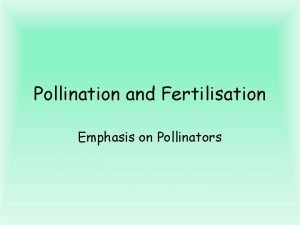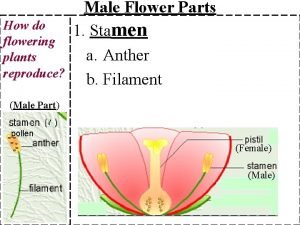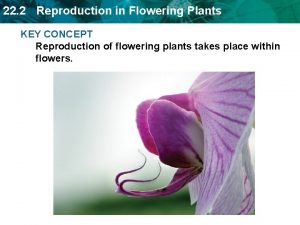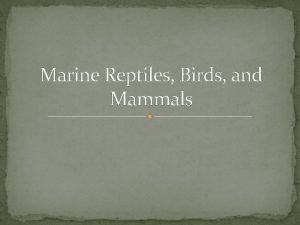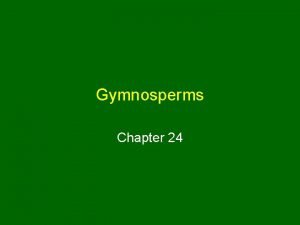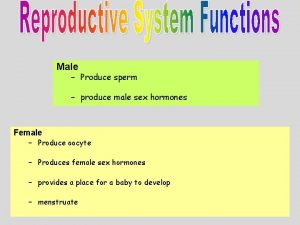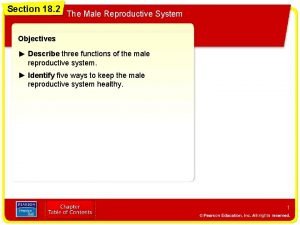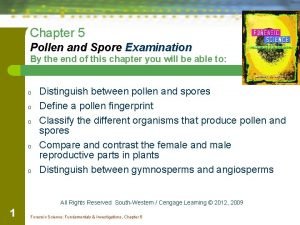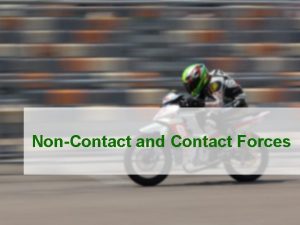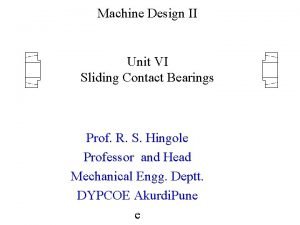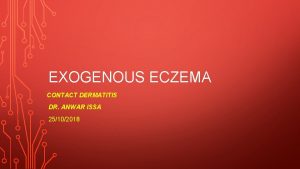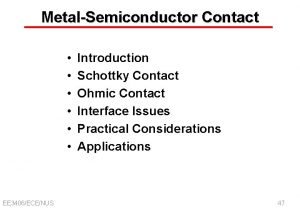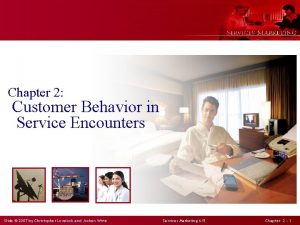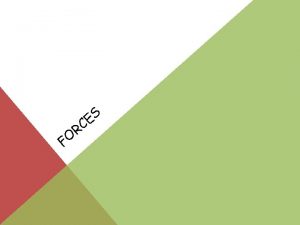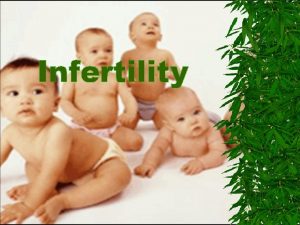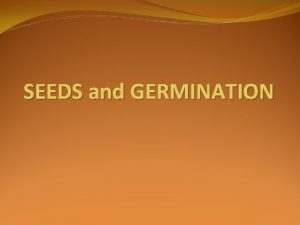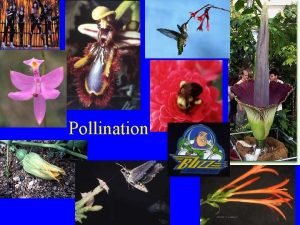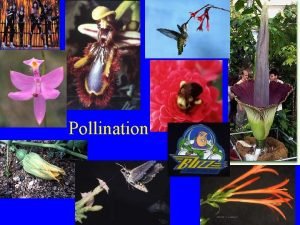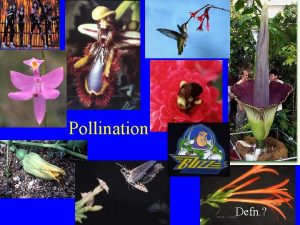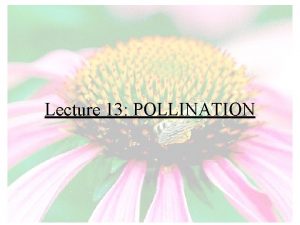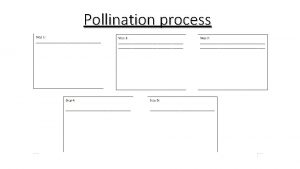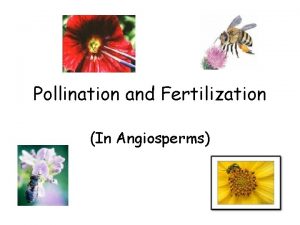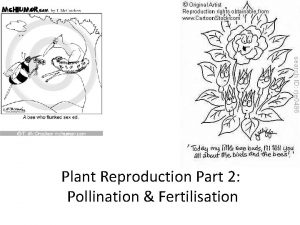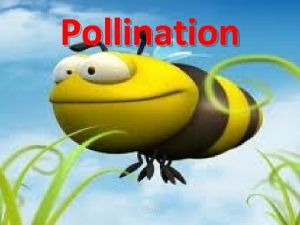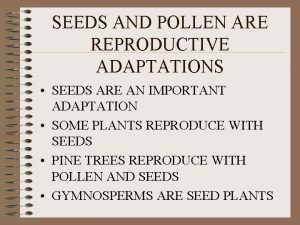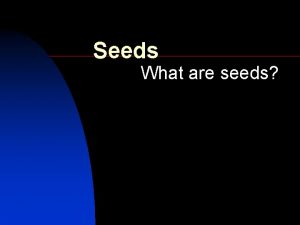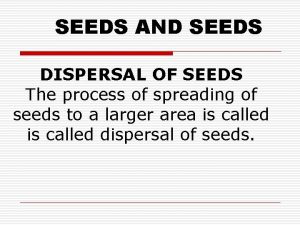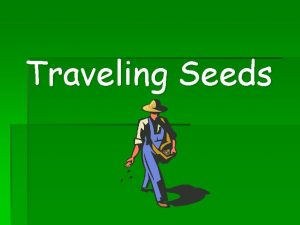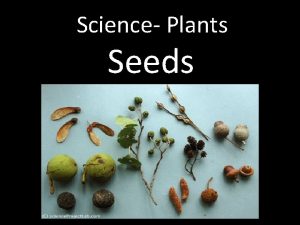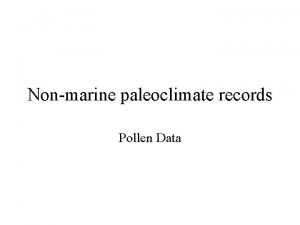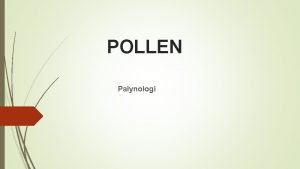SEEDS Pollination Review Pollination Male sperm pollen contact



















- Slides: 19

SEEDS


Pollination Review • Pollination: Male sperm (pollen) contact the female part of the flower (stigma) • Self Pollination: pollen on a plant pollinates flower on the same plant • Cross Pollination: the pollen of a • plant pollinates the flower on another plant of the same species


What is a Seed? • A living organism that is dormant • Has the new plant inside • Part of the plants reproduction • Develop in the pistil of the plant – Develops from the ovule • Living thing! • Once fertilized zygote grows forming the embryo of the seed

What does it mean to be dormant?

Seed Diagram Endosperm provides FOOD!

Monocot Seed

Dicot Seed


Seed Embryo • Has parts of a complete plant – Leaves • Epicotyl , plumule – Stems • Hypocotyl – Roots • Radicle – FOOD • Endosperm, or cotyledon

Seed Embryo Anatomy • Radicle : the lower end of the hypocotyl that forms the first root of the plant. – Emerges 1 st at the start of germination • Hypocotyl: develops into true stem • Epicotyl/Plumule: first leaves!

Seed Embryo Anatomy • Endosperm: provides food for growing seed embryo • Cotyledons: store food absorbed from the endosperm when the seed was formed • Seed Coat: surrounds the seed and protects it from injury and dehydration

Remember? • Sexual Reproduction: involves the union of the male pollen with the female egg and results in the formation of a seed. • How is it beneficial? – Allows the plant to make new combinations of genetic information – Adds VIGOR • Increased health

• Many plants reproduce naturally • How? – Special accommodations to attract vectors – Remember what a Vector is? • Abiotic: Wind , Gravity, Rain • Biotic: Birds, Bats, Bees • How has this plant attracted the humming bird? Is there anything special you notice about the plant? How does this happen?

Embryo Plant • Forms into adult mature plant – Embryo plant + stored food source = SEED • Seed holds everything the embryo plant needs for the start to life and growth • Remember what the seed contains? – Embryo plant, endosperm (the stored food) and is surrounded by a protective shell, the seed coat.

Germination • Definition: process by which an embryo plant inside the seed changes into a developing seedling – Crops grown from seeds: soybean, corn, cotton and other vegetables !

Germination: Steps • Step 1: Absorption of Water! – By Diffusion – Pressure Builds • Pressure in seed (and adult plant) is called TURGOR – Seed ruptures • Step 2: Radicle Emerges – First root/tap root

What’s Required? • WATER! • Optimum temperature – 55 and 70 degrees F • Oxygen – Too much water can suffocate the plant • Some require Stratification – A period of cold temperature • Broken seed coat – Digestive Bacteria, eaten by an animal, Frozen thawed
 During pollination pollen is transferred from a stamen to a
During pollination pollen is transferred from a stamen to a What are the male parts of a flower
What are the male parts of a flower Pollination occurs when a pollen grain
Pollination occurs when a pollen grain Why are sperm whales called sperm whales
Why are sperm whales called sperm whales Seeds are present but naked in
Seeds are present but naked in Reproductive organ
Reproductive organ How to create sperm in male body
How to create sperm in male body Pathway of semen
Pathway of semen Chapter 5 pollen and spore examination review answers
Chapter 5 pollen and spore examination review answers Non contact force examples
Non contact force examples Advantages and disadvantages of sliding contact bearing
Advantages and disadvantages of sliding contact bearing What is a contact force
What is a contact force Which force is a noncontact force?
Which force is a noncontact force? Irritant vs contact dermatitis
Irritant vs contact dermatitis What is force
What is force Dangling bond
Dangling bond Post encounter stage in service marketing
Post encounter stage in service marketing Contact force
Contact force Contact and non contact forces
Contact and non contact forces Exercise 42 review male reproductive system
Exercise 42 review male reproductive system
